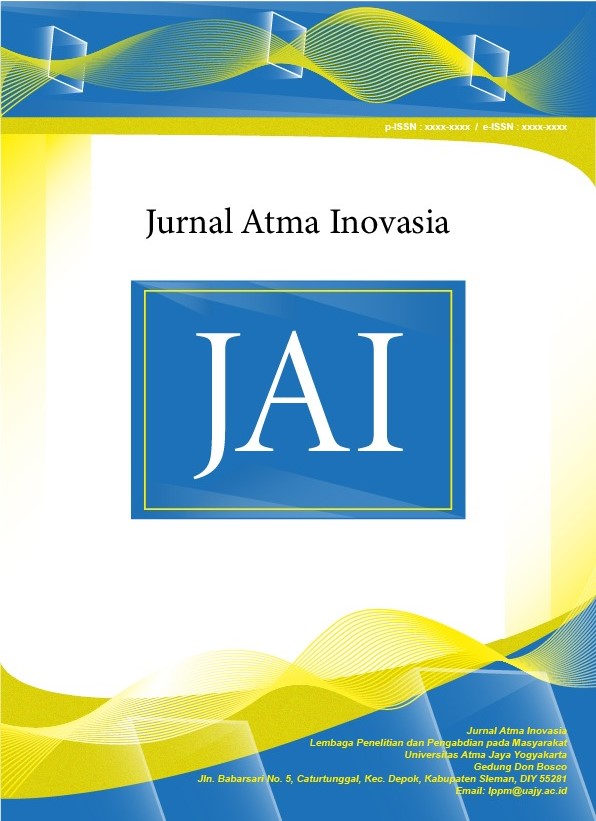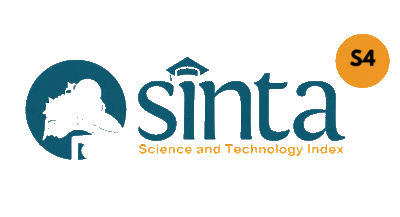Peningkatan Partisipasi Relawan dan Pelaku Pariwisata dalam Pengelolaan Risiko Bencana di Kompleks Candi Borobudur
DOI:
https://doi.org/10.24002/jai.v2i1.5398Keywords:
participation, management, disaster, world heritage siteAbstract
Disaster Risk Management Plan in cultural heritage areas such as the Borobudur Temple Complex, should be the joint responsibility of all stakeholders. In fact, disaster management at the Borobudur Temple Complex, especially the preservation of the site against disasters, is only the responsibility of the Borobudur Conservation Center. Therefore, in September-November 2021 through the research activities funded by UNESCO, UAJY and BKB have formulated a draft Disaster Risk Management Plan in the form of the borobudur-drr.id digital platform. However, due to the limited implementation time, this platform has not been fully socialized by all stakeholders. Based on the stakeholder meeting, it is known that there are differences in understanding among stakeholders in understanding the comprehensive approach contained in the Disaster Risk Management Plan Action Plan for the Borobudur Temple Complex. The diversity of educational backgrounds, experiences and exposure of stakeholders to disasters and their management requires a forum for equalizing perceptions that supports the synergy of stakeholders in supporting, supervising and implementing the action plans that have been prepared. Conservationists, volunteers and tourism actors are three of the fifty-three stakeholders that have been mapped in the Borobudur Temple Compounds Disaster Risk Management Plan, which has a vital role in realizing the action plan in the Borobudur Temple Area.
References
M. Ravankhah, “Earthquake Disaster Risk Assessment for Cultural World Heritage Sites: The Case of ‘Bam and its Cultural Landscape’ in Iran,” 2020.
UNESCO, “Reducing Disasters Risks at World Heritage Properties,” 2021, [Online]. Available: https://whc.unesco.org/en/disaster-risk-reduction/.
S.Zubirc and H. Amirrol, “Disaster risk reduction through community participation,” WIT Trans. Ecol. Environ., 2011, doi: 148. 195-206. 10.2495/RAV110191.
T. E. Backer, “Strengthening Nonprofits,” in Building Capacity in Nonprofit Organizations: Foundation Initiatives for Nonprofit Organizations, C. J. De Vita and C. Fleming, Eds. The Urban Institute, 2001.
R. A. Krueger, “Focus Groups: A Practical Guide for Applied Research,” Sage Publ. Inc., 1988, doi: 10.2307/3172912.
R. . Merton, M. Fiske, and P. . Kendal, “The Focused Interview: A Manual of Problems and Procedures,” Free Press, vol. 2nd, 1990.
D. L. Morgan, “Focus Groups,” Annu. Rev. Sociol., 1996, doi: http://dx.doi.org/10.1146/annurev.soc.22.1.129.
M. B. Arigia, T. Damayanti, and A. Sani, “Infografis Sebagai Media Dalam Meningkatkan Pemahaman Dan Keterlibatan Publik Bank Indonesia,” J. Komun., 2016, [Online]. Available: https://journal.untar.ac.id/index.php/komunikasi/article/view/63/145.
W. F. Senjaya et al., “PERAN INFOGRAFIS SEBAGAI PENUNJANG DALAM PROSES PEMBELAJARAN SISWA,” J. Pengabdi. Kpd. Masy., 2019, doi: doi.org/10.24071/altruis.2019.020108.
Direktorat Riset dan Pengabdian kepada Masyarakat Universitas Indonesia, Renstra Pengabdian Masyarakat. Depok, 2016.
R. Jigyasu, “Reducing Disaster Risks to Urban Cultural Heritage: Global Challenges and Opportunities,” J. Herit. Manag., vol. 1, pp. 59–67, 2016, doi: https://doi.org/10.1177/2455929616649476.
Downloads
Published
Issue
Section
License
Copyright (c) 2022 Khaerunnisa Khaerunnisa, Mutiara Cininta, Yonathan Dri Handarkho

This work is licensed under a Creative Commons Attribution-ShareAlike 4.0 International License.










